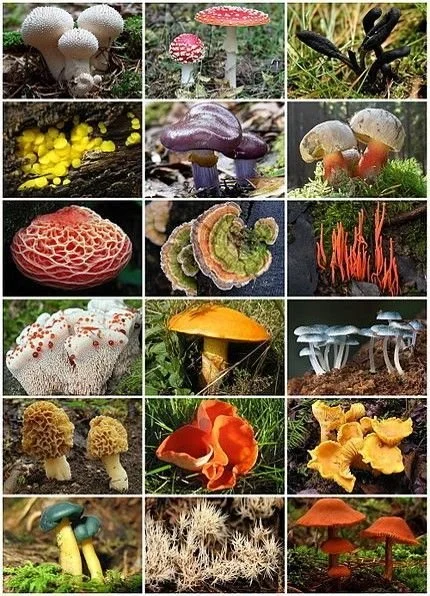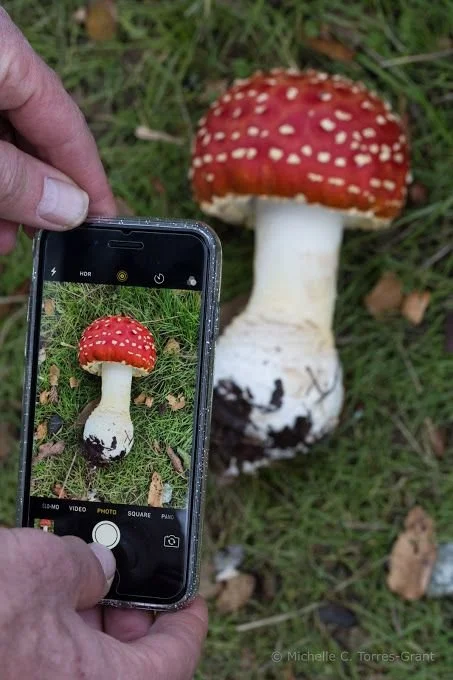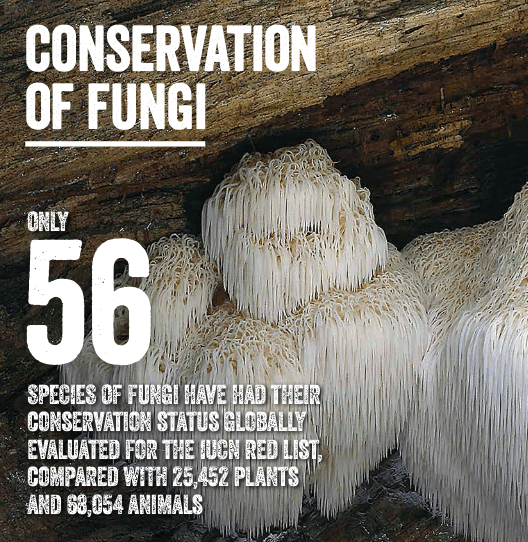Welcome to FUNDIS: A new organization for a new fungal future
We’ve been hinting at it for a while and today, the day has finally come. The North American Mycoflora Project is evolving: new name, new logo and an expanded mission. Say goodbye to the North American Mycoflora Project (NAMP) and welcome Fungal Diversity Survey - FunDiS for short.
A name that celebrates what we do
Let us assure you, this is not merely change for change’s sake. Much thought has gone into this renaming. We hope you’ll agree with us that our new name better reflects who we are and what we do.
Having the word Mycoflora in our name had become a challenge. “Flora” is a term from botany - the study of plants. Fungi, as Professor Don Pfister so eloquently explained in a recent blog post, are anything but plants. Fungi are their own kingdom - but as long as they get lumped in with plants they will not get the recognition, attention and protection they deserve. As an organization championing the special place of fungi in the world we needed to stand up for them - starting with our name.
Source: Raymond Archambault, curator, Fongarium du Cercle des Mycologues de Montréal, Biodiversity Center, University of Montreal, Quebec, Canada.
When we embarked on a search for a new name, we enlisted the collective creativity of more than 30 stakeholders who brainstormed names with us and helped us narrow down the resulting list. Thank you all - you know who you are!
We chose Fungal Diversity Survey (FunDiS) for a number of reasons:
Unlike Mycoflora Project, it’s a name anyone can understand.
It celebrates our own kingdom, fungi.
It actually explains what we do, and why we do it: our participants spend countless hours out in the forest and fields to survey and map the wonderful, endlessly fascinating and critically important diversity of fungi out in the world.
Fungal diversity is ecosystem diversity; we’re celebrating the importance of biodiversity.
And it has a cool abbreviation: FunDiS. What’s not to love?
Photo: Wikimedia Commons
Embracing the new era of citizen science
But this is much more than a shallow exercise in branding, nor mere window-dressing.
Our rebranding marks a significant evolution of our mission, an evolution we’re already hinted at in an earlier blog post: A four-tiered model for crowdsourcing fungal biodiversity citizen science.
Photo: Michelle Torres-Grant
The last decade has seen an explosion in citizen science and participatory crowdsourcing of the natural world. For example, a staggering 500 million bird observations have been logged on eBird globally. Almost 2 million observations of fungi by over 170,000 observers have been recorded for North America on iNaturalist. This surge in participatory, technology-enabled citizen science creates an unprecedented opportunity to engage mycophiles at every level to survey our continent’s fungi.
Up until now we’ve focused on requiring participants to operate at the level of professional mycologists: extensive documentation, sequencing DNA, and preserving dried specimens for deposit in fungaria. While this is wonderful (and not something we would ever want to lose) we realized that it can be overwhelming to the average citizen scientist and represents a somewhat limited view of what constitutes legitimate science in the era of crowdsourcing.
We asked ourselves - what could FunDiS meaningfully contribute? After all, iNat and Mushroom Observer seem to be doing fine without our help. When we asked mycologists interested in using citizen science data, the need was clear: better data! While there is no shortage of observations of fungi on citizen science platforms, many observations are not useful, because pictures are poor or insufficient, habitat and other data is missing, and many lack proper ID or are wrongly identified.
We realized that there is an opportunity to broaden our current mission, by engaging the large universe of mycophiles posting observations online and a) training them to provide higher quality documentation and b) ensuring that observations get IDd by expert identifiers. Our ultimate goal is to create a database of high quality observations that can be deployed by scientists, citizen scientists and conservationists to better understand and protect the broad diversity of fungi in North America.
There are now four ways of participating in FunDiS:
Level 1. Document: Create high quality observations on iNat and Mushroom Observer.
Level 2. Sequence: In addition, submit tissue for DNA sequencing and interpret results.
Level 3. Voucher: In addition, preserve well-documented, dried specimens in curated fungaria.
Level 4. Super-user: In addition, learn DNA technology, teach others how to analyze DNA results and create phylogenies; perhaps even describe new species.
So whether you’re a NAMP veteran or merely curious, FunDiS has a place for you! Participating has never been easier - and it’s never been more important.
All the information you need on participating at any of these levels can be found on the new FunDiS website at FunDiS.org.
Sequencing is back!
Making the molecular revolution accessible and affordable to individuals, clubs and organizations have been at the core of what we do. We’re proud of what we achieved: some 5,000 specimens have been sequenced to date from projects, forays and MycoBlitzes, with results posted on MycoMap, MyCoPortal, Genbank; and original iNat observations for MycoBlitzes. This includes rare and undescribed species, and clarification of certain other species.
Sequencing from existing projects have been on hiatus since the end of last year because we’ve been identifying and testing a new partner - BOLD, the Barcode of Life Data System, based at the Center for Biodiversity Genomics at the University of Guelph. Ontario. They are able to analyze high volumes at low cost with a predictable turnaround time. This partnership will clear the bottlenecks and offer other advantages such as easy GenBank submission.
If you’re an individual or project leader who has been Tagging, Bagging and Holding onto your sequences over the last nine months, we thank you for patience! As of today we’re accepting sequences again and are making new grants available.
Information on getting new grants or purchasing new sequences can be found here.
Fungi under attack: focus on conservation
The other question we asked ourselves as we were evolving our mission was about our impact in the world.
Today, fungi are under threat like never before. Habitat destruction, pollution and climate change mean that fungi are going extinct or changing distribution faster than we can catalog and map them. Underfunded mycology departments and a loss of “alphataxonomists” mean there are fewer individuals with the time and expertise to document and describe them. And, because institutions and the general public don’t understand the critical contribution of fungi to ecosystems, this will not change anytime soon.
From Willis, K.J., 2018. State of the world's fungi
This creates not only an opportunity but an urgent need to put FunDiS into the service of conservation, as a tool to help document and even protect rare and endangered species, or a way of tracking species that are harbingers of climate change.
In the summer of 2020 we assembled a working group of mycologists and leaders in fungal conservation to develop a proposed course of action. This group has developed some exciting ideas that we’ll share later in the year. Please stay tuned!
Our mission
Our rebranding has been an interesting journey, a journey that involved a lot of soul searching, brainstorming, reflecting, revising, rewriting and debating. We could have never done it without the many volunteers who put in the time and shared their expertise. We could have also not done it without our participants who patiently waited for us while all this was happening.
To close it all out we want to share our new mission, a mission that lays out the work ahead of us for many years to come:
Our Mission is to equip citizen and professional scientists with the tools to document the diversity and distribution of fungi across North America. These data will help increase awareness of the critical role of fungi in the health of our ecosystems and allow us to better protect them in a world of rapid climate change and habitat loss.






